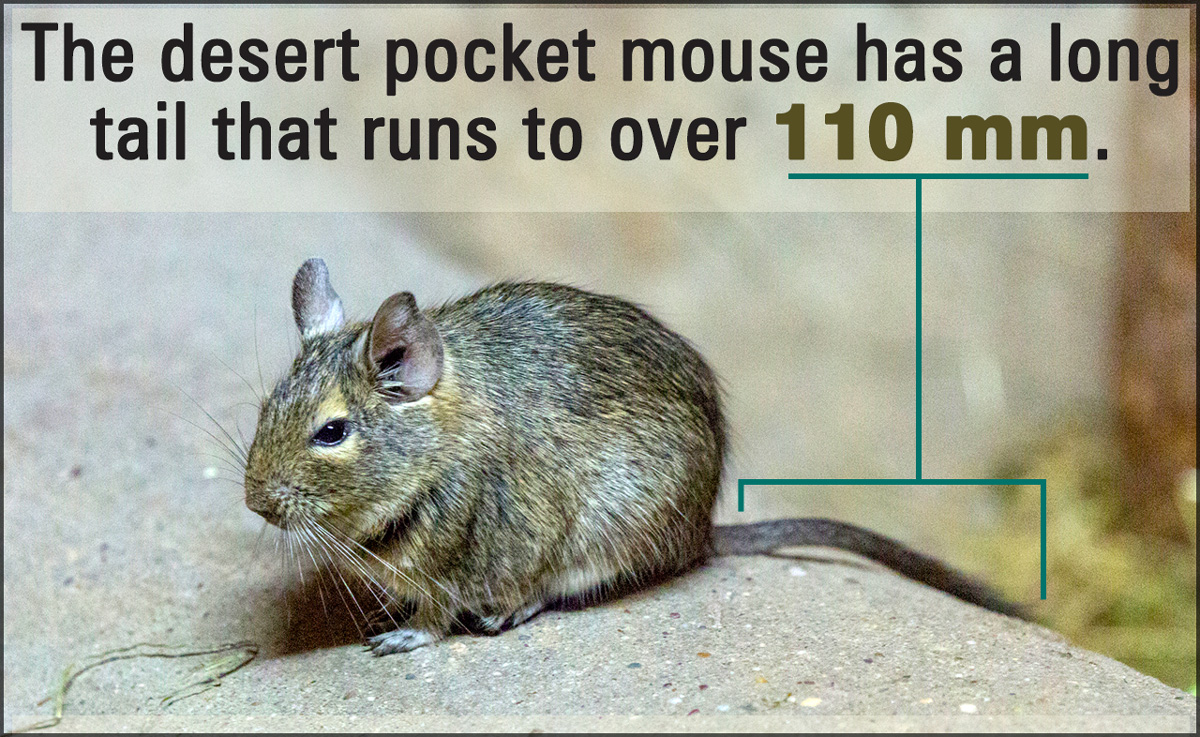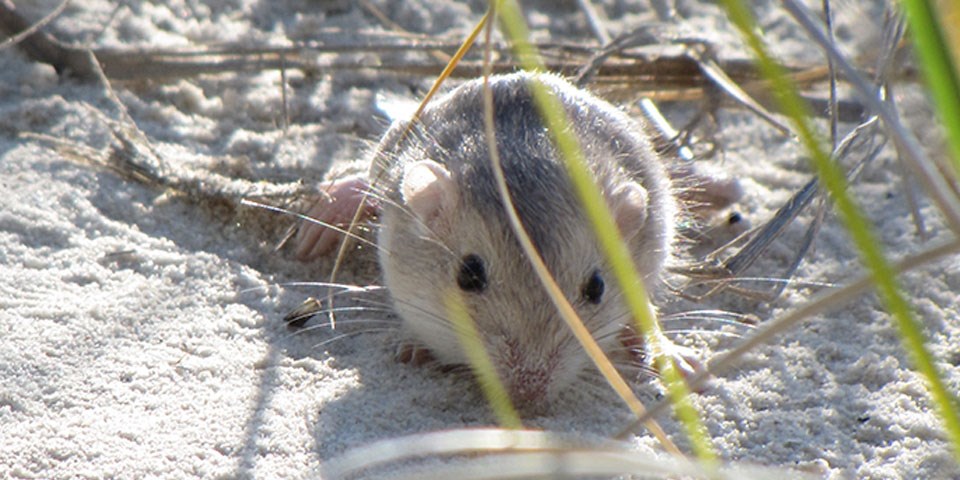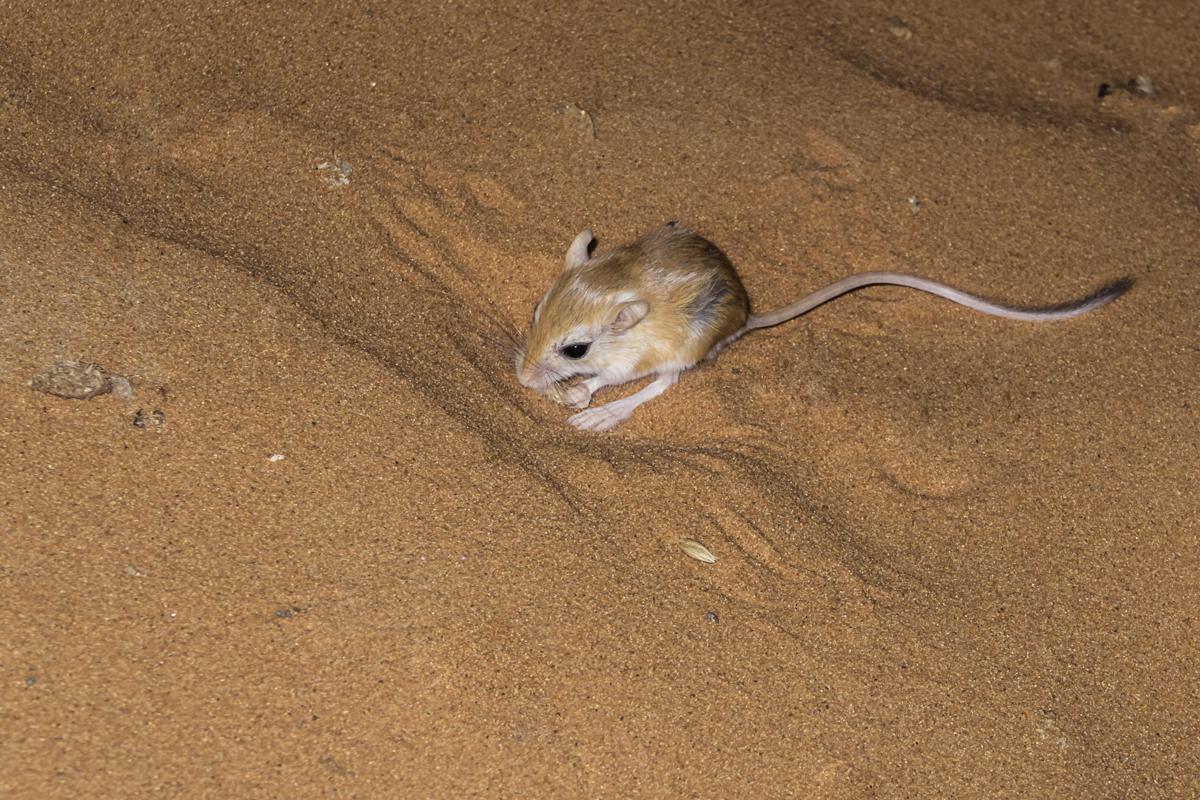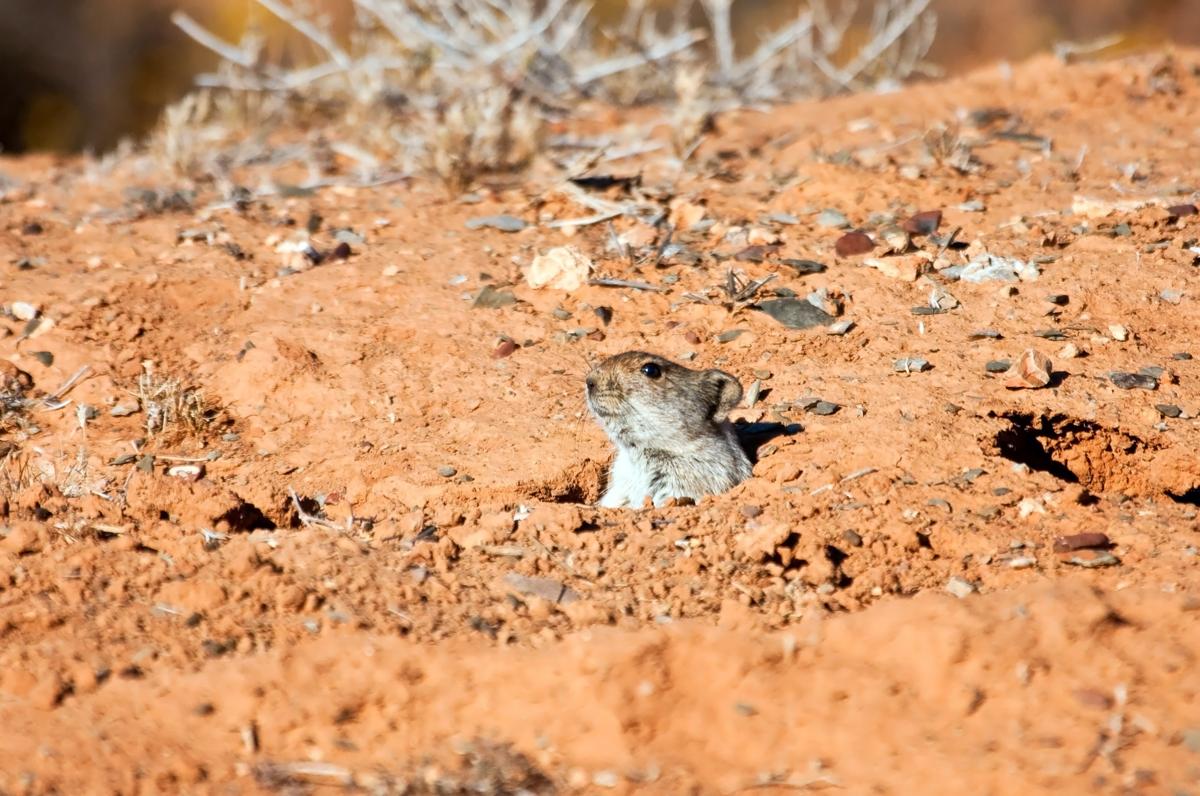Desert Pocket Mouse Diet
Including the burrowing owl and loggerhead shrike. It burrows into the desert soil to find seeds from grasses or shrubs.
 404 Page Not Found University Of Calgary Kangaroo Rat Desert Animals Animals
404 Page Not Found University Of Calgary Kangaroo Rat Desert Animals Animals
Their scat can have fur in it which will leave it pointed on the ends.

Desert pocket mouse diet. Pocket mice are in. In captivity they have been found to. The desert pocket mouse is a granivore meaning seeds make up its diet.
They also occasionally eat insects and green vegetation. It may occasionally supplement its diet with insects. They consume plants or producers and then are prey.
Sep 01 2020 Their diet consists of kangaroo rats desert cottontails and Apache pocket mice. Feeding behavior The Pacific pocket mouses diet consists of seeds nuts and green vegetation when available. Mar 12 2010 True to its common name the desert pocket mouse prefers sandy sparsely vegetated desert.
The pocket mice are also primarily granivorous seed eating most often eating mesquite beans and the seeds of grasses creosote bushes and weeds. They may also eat some insects and a very little vegetation. It feeds primarily on seeds of forbs grasses and shrubs although green vegetation and insects may supplement the diet.
Food Habits Arizona pocket mice are primarily granivorous eating seeds of forbs or woody plants. It may use crevices and cracks in rocky ledges as retreats. May 31 2017 Mice are important as they feed small predators like snakes and foxes.
It also stores seeds in the underground burrows where it lives. They may also eat some insects and a very little vegetation. Winter diet largely consists of seeds.
Predominantly a folivore the desert mouse has also been known to eat seeds and invertebrates when leaves and shoots are less widely available. This pattern held both between sites and between years at Thousand Palms Oasis indicating a regional diet similarity. To see more answers head over to College Study Guides Virtual Teaching Assistant.
Mainly granivorous but seasonally will eat green vegetation and insects. These granivores will leave the burrow at night to gather the seeds in order to avoid direct contact with the desert sun. The length of one footprint is.
They carry the seeds in cheek pouches and cache them in their dens. Baileys pocket mice are adapted to. Like other pocket mice the desert pocket mouse has fur-lined cheek pouches on the outside of its mouth which it uses to gather the seeds it finds.
In the Mojave Desert and at two of the sites at intermediate eleva-. Laboratory studies of the desert mouse have found its water requirements to be quite low. Mar 29 2017 The rock pocket mouse also prefers rocky slopes in the desert lava flows and gravelly soils.
Aug 22 2020 Solitary and nocturnal these desert dwellers spend the day in their underground burrows which stay much cooler than the surface temperatures. At night pocket mice emerge to forage for seeds. Nov 21 2015 Pocket mice are almost entirely nocturnal.
The desert pocket mouse has cheek pouches to store seeds in and it also builds burrows to store seeds for the winter. Vegetation and insects become important diet elements in spring and summer Scheffer 1938 Hall 1946 Iverson 1967 Kritzman 1974. Baileys pocket mice are adapted to eat jojoba.
Its primary diet is seeds making it a granivore. Most of these seeds and vegetation can be found in bushes or small shrubbery close to the burrow. These seeds make up the bulk of their diet and are quickly stored away first in the mices cheek pockets and later in their burrows.
The tracks of a kit fox are very hard to distinguish from dog tracks in the park. Seeds are also stored in burrows and in dispersed caches throughout their territories. These include those of creosote bush Pectocarya heronbill and plantain.
During the night they forage for seeds eating mainly mesquite beans and the seeds of grass creosote bushes and other plants. These small mammals and others are an important prey source for snakes as well as various bird species. The pocket mice are also primarily granivorous seed eating most often eating mesquite beans and the seeds of grasses creosote bushes and weeds.
Seeds of mesquite creosote bush and broomweed have been found in the cheek pouches of desert pocket mice. Colorado Desert pocket mice Perognathus sp were the most common prey in Common Barn-Owl diets Table 1. Creosote seeds make up a large part of the desert pocket mouses diet.
The pocket mice are also primarily granivorous seed eating most often eating mesquite beans and the seeds of grasses creosote bushes and weeds.
 Kangaroo Rats White Sands National Park U S National Park Service
Kangaroo Rats White Sands National Park U S National Park Service
 Kangaroo Rat Fact Sheet Kangaroo Rat Mammals Rat Facts
Kangaroo Rat Fact Sheet Kangaroo Rat Mammals Rat Facts
 Lcr Mscp Covered Species Rodents Desert Pocket Mouse
Lcr Mscp Covered Species Rodents Desert Pocket Mouse
 Lcr Mscp Covered Species Rodents Desert Pocket Mouse
Lcr Mscp Covered Species Rodents Desert Pocket Mouse
 Tiny Desert Rodents Pima Master Naturalists
Tiny Desert Rodents Pima Master Naturalists
 Banner Tailed Kangaroo Rat Dipodomys Spectabilis At Its Burrow Entrance Sonoran Desert Kangaroo Rat Small Pets Animal Study
Banner Tailed Kangaroo Rat Dipodomys Spectabilis At Its Burrow Entrance Sonoran Desert Kangaroo Rat Small Pets Animal Study
 Apache Pocket Mouse White Sands National Park U S National Park Service
Apache Pocket Mouse White Sands National Park U S National Park Service
 Desert Kangaroo Rat Facts Diet Habitat Pictures On Animalia Bio Kangaroo Rat Australia Animals Animals
Desert Kangaroo Rat Facts Diet Habitat Pictures On Animalia Bio Kangaroo Rat Australia Animals Animals
 Desert Pocket Mouse Facts Animal Sake
Desert Pocket Mouse Facts Animal Sake
 An Arizona Pocket Mouse Sonoran Desert Detectives
An Arizona Pocket Mouse Sonoran Desert Detectives
 Signs Of Mice You Should Be Looking For Rodents Mouse Animals
Signs Of Mice You Should Be Looking For Rodents Mouse Animals
 An Arizona Pocket Mouse Sonoran Desert Detectives
An Arizona Pocket Mouse Sonoran Desert Detectives
 Pocket Mouse Rodent Britannica
Pocket Mouse Rodent Britannica
 Desert Pocket Mouse Facts Animal Sake
Desert Pocket Mouse Facts Animal Sake
 Desert Pocket Mouse Facts Animal Sake
Desert Pocket Mouse Facts Animal Sake
 Lcr Mscp Covered Species Rodents Desert Pocket Mouse
Lcr Mscp Covered Species Rodents Desert Pocket Mouse
 An Arizona Pocket Mouse Sonoran Desert Detectives
An Arizona Pocket Mouse Sonoran Desert Detectives
